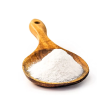The Cultural and Historical Importance of Egyptian Taameya
Origins of Taameya
Egyptian Taameya, also known as Egyptian falafel, is a dish with ancient roots. While the Levantine version of falafel is made with chickpeas, Egypt’s version uses fava beans. Fava beans were a crucial part of the Egyptian diet as far back as Pharaonic times. They thrived in Egypt’s fertile land along the Nile, making them an accessible and reliable food source.
A Breakfast Staple in Egypt
In Egypt, Taameya is more than just a meal. It forms an essential part of the traditional breakfast, often paired with fool medames, a dish also made from fava beans. Egyptians commonly enjoy Taameya with fresh vegetables, pita bread, and tahini sauce. It’s a popular street food, sold at stalls across the country, making it accessible to everyone. Many locals rely on it for an affordable and nutritious start to their day.
Cultural Significance
Ta’ameya represents more than just a simple dish. Its preparation and consumption are tied to Egyptian social life. Families and friends often gather to enjoy Taameya, especially during breakfast. The dish’s flavors—enhanced by herbs like parsley, cilantro, and spices like cumin—highlight the richness of Egyptian cuisine. The use of fava beans distinguishes it from other falafel varieties, emphasizing Egypt’s culinary identity.
Taameya’s Global Reach
As interest in vegan and plant-based diets grows worldwide, Taameya is becoming more popular outside of Egypt. People are drawn to its unique flavors and its simplicity as a wholesome, plant-based food. With international recognition, Taameya has become a symbol of Egypt’s contribution to global cuisine. The rise of Egyptian restaurants worldwide has brought this dish to new audiences.
The Dish’s Timeless Appeal
Even with its ancient origins, Taameya remains an essential part of Egyptian culture today. Its enduring popularity reflects the timeless appeal of dishes made from simple ingredients. Whether enjoyed as a street snack or a homemade meal, Taameya continues to connect people to Egypt’s culinary heritage.
Discover Traditional Egyptian Recipes Discover Traditional Asian Recipes You may like this also: Argentinian Milanesa
Egyptian Ta’ameya
Ingredients
Instructions
-
Soak the fava beans overnight until they soften.
-
Drain the beans and place them in a food processor.
-
Add the chopped onion, garlic, parsley, cilantro, and dill to the beans.
-
Process the mixture until smooth but with a bit of texture remaining.
-
Add cumin, coriander, salt, pepper, and baking soda to the mixture.
-
Blend everything together until fully combined.
-
Shape the mixture into small patties and slightly flatten them.
-
Sprinkle sesame seeds on top of the patties.
-
Heat oil in a frying pan.
-
Fry the patties until golden brown and crispy on both sides.
-
Drain the fried taameya on paper towels to remove excess oil.
-
Serve with pita bread, vegetables, and tahini sauce.
-
Your authentic Egyptian Ta'ameya is ready. Bil Afiyet!
Nutrition Facts
Servings 4
- Amount Per Serving
- Calories 200kcal
- % Daily Value *
- Total Fat 10g16%
- Saturated Fat 1g5%
- Sodium 300mg13%
- Potassium 400mg12%
- Total Carbohydrate 24g8%
- Dietary Fiber 8g32%
- Sugars 2g
- Protein 10g20%
- Vitamin A 300 IU
- Vitamin C 8 mg
- Calcium 80 mg
- Iron 3.5 mg
- Vitamin E 2 IU
- Vitamin K 40 mcg
- Thiamin 0.2 mg
- Riboflavin 0.1 mg
- Niacin 1.2 mg
- Vitamin B6 0.3 mg
- Folate 150 mcg
- Biotin 5 mcg
- Pantothenic Acid 0.5 mg
- Phosphorus 120 mg
- Magnesium 50 mg
- Zinc 1 mg
- Selenium 5 mcg
- Copper 0.2 mg
- Manganese 0.4 mg
- Chloride 100 mg
* Percentage values are adjusted for a daily diet of 2000 calories. Your daily value may be higher or lower depending on your calorie needs.
Note
Serve taameya with pita bread, fresh vegetables (tomato, cucumber), and tahini sauce, or use it as part of a larger Egyptian breakfast with fool medames (fava bean stew).













